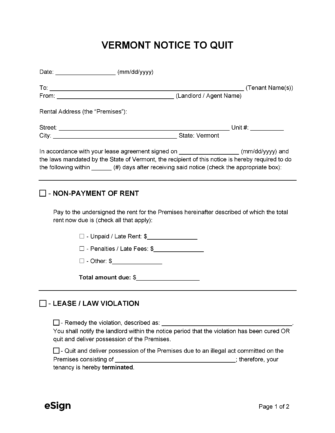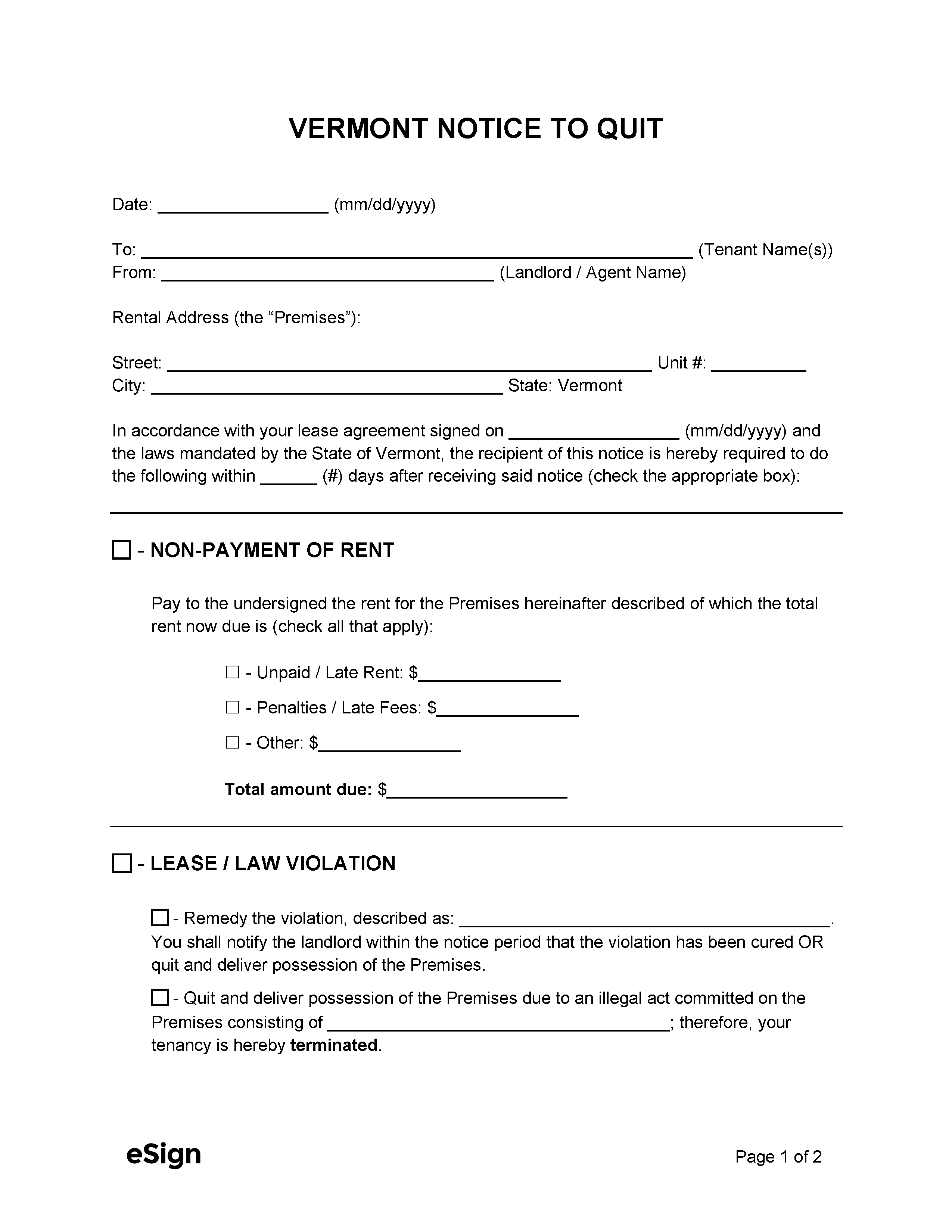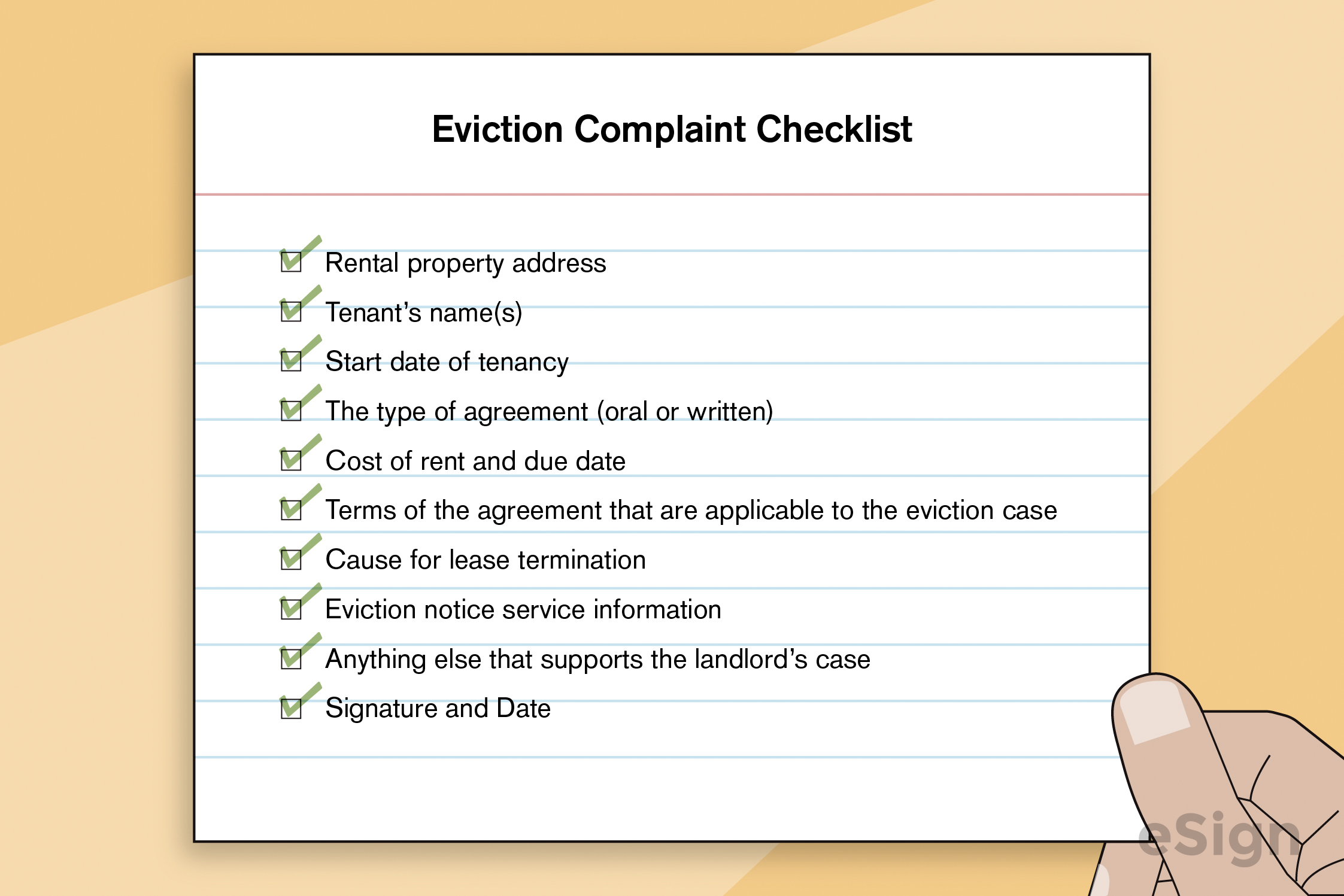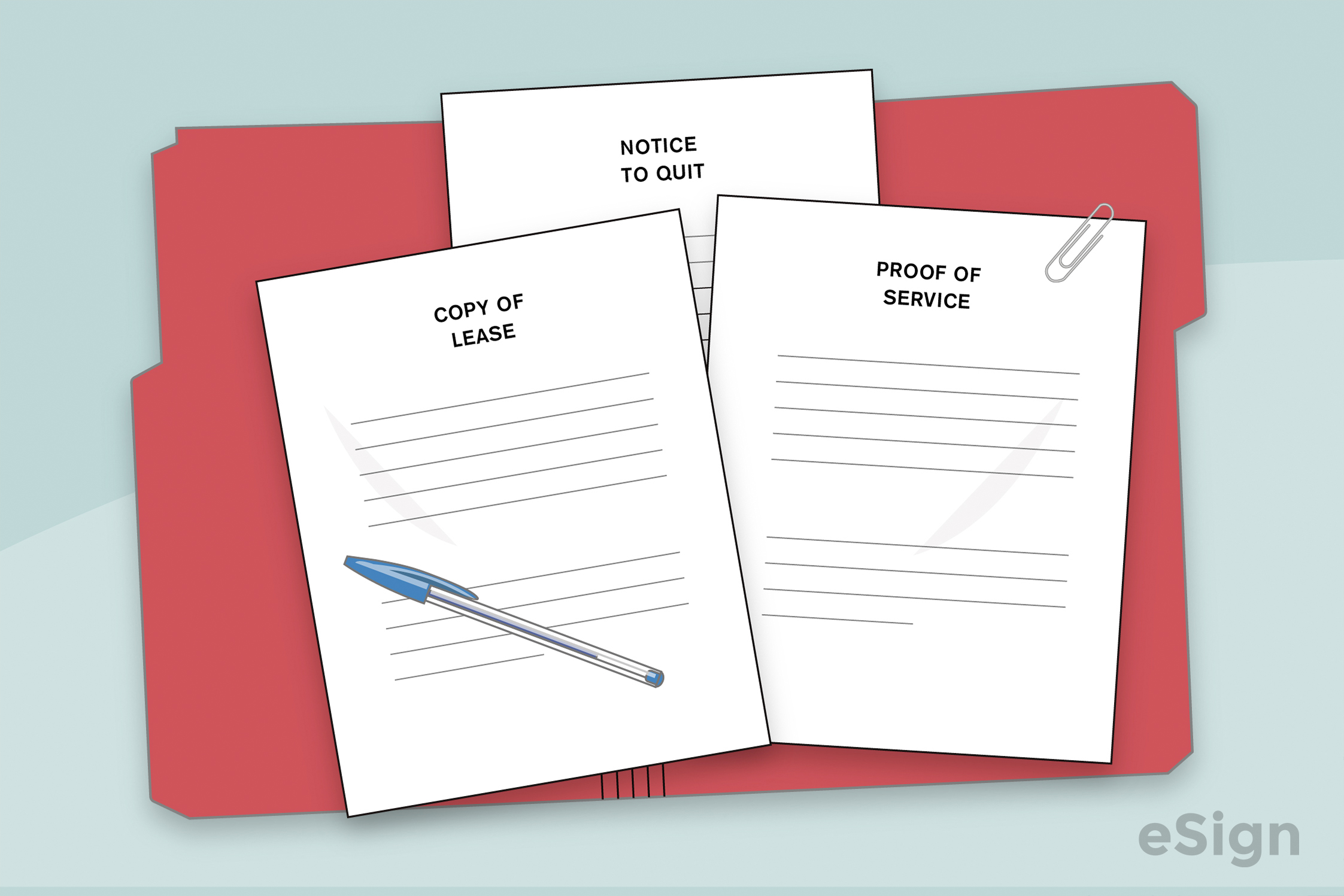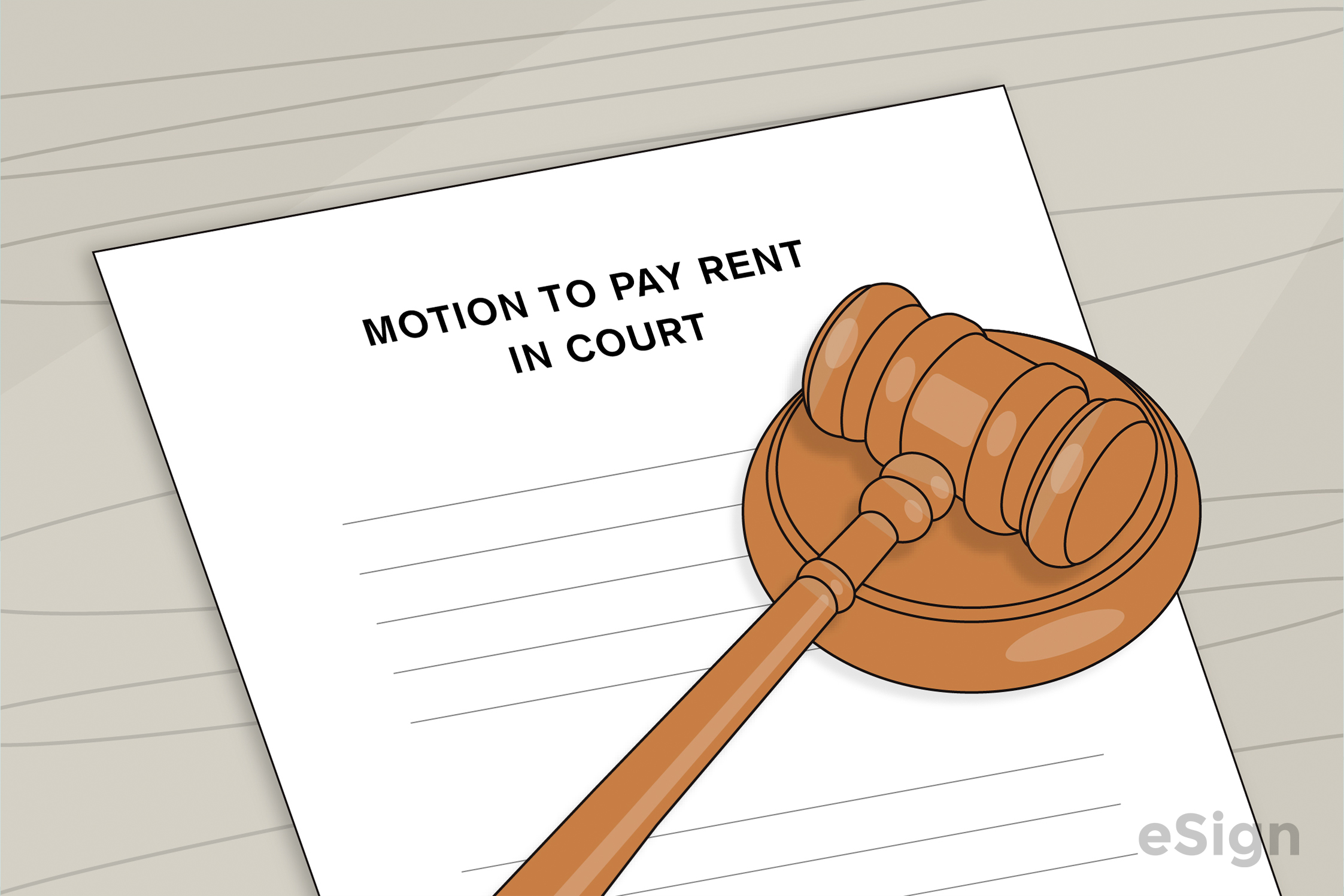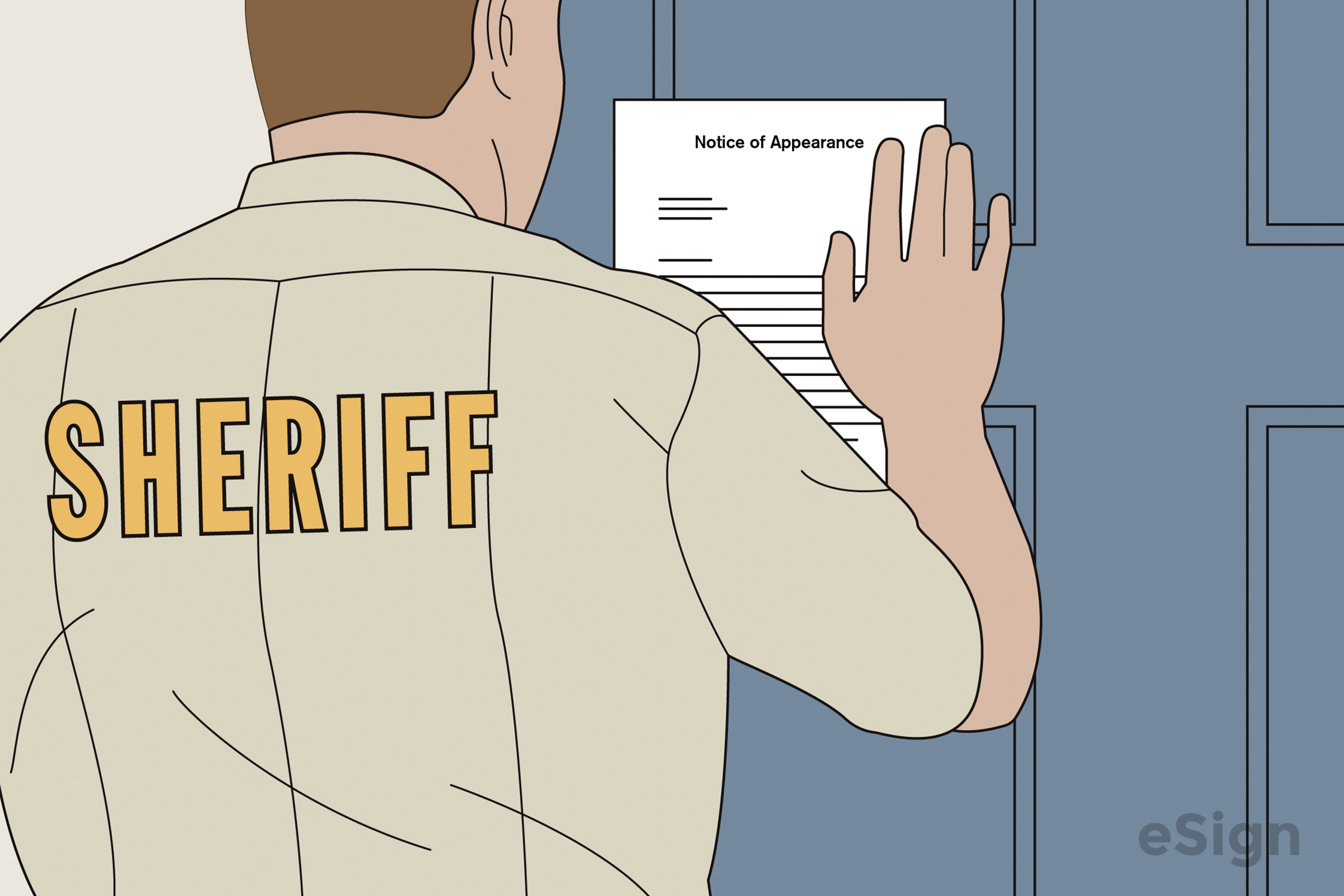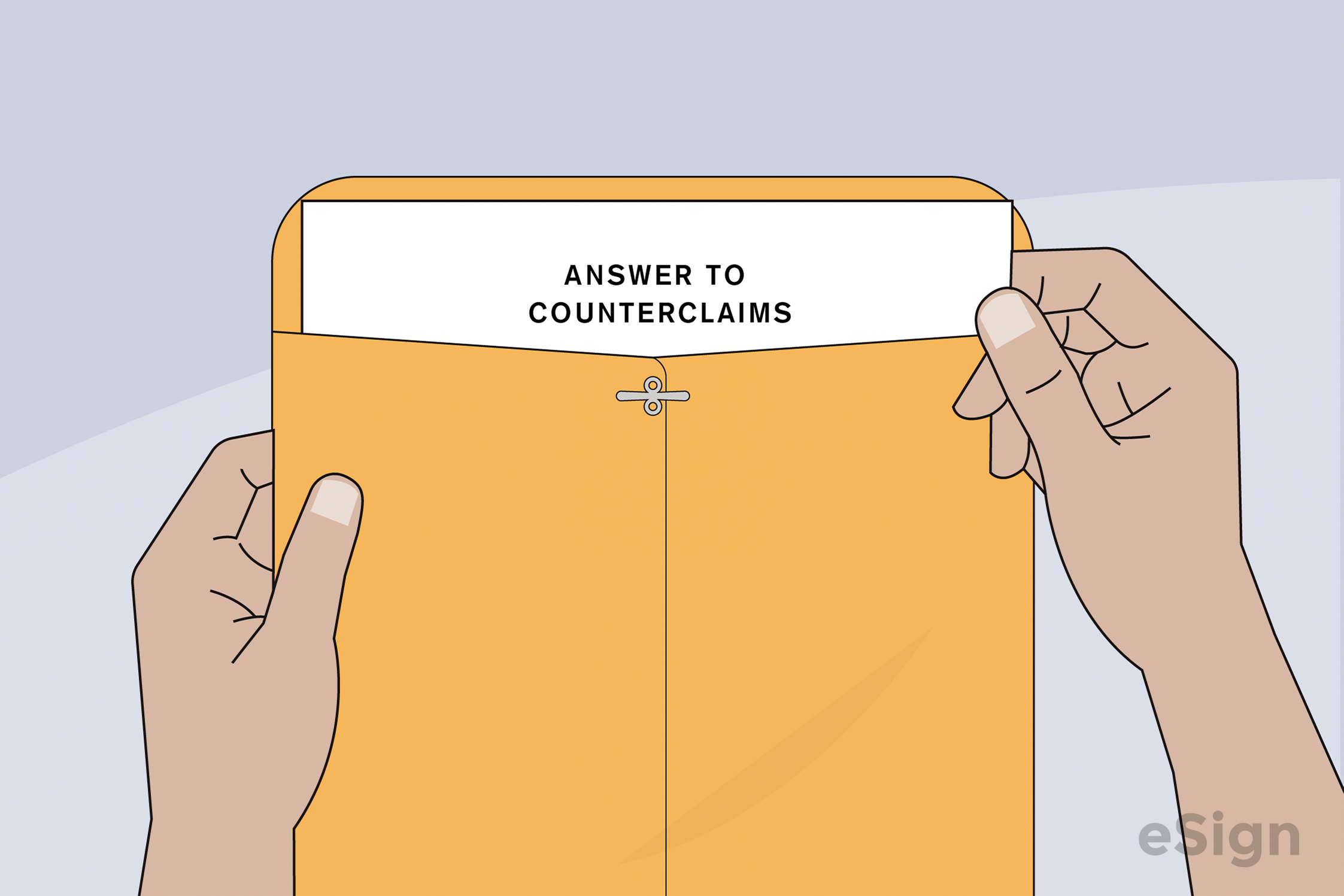Eviction Notices: By Type (5)
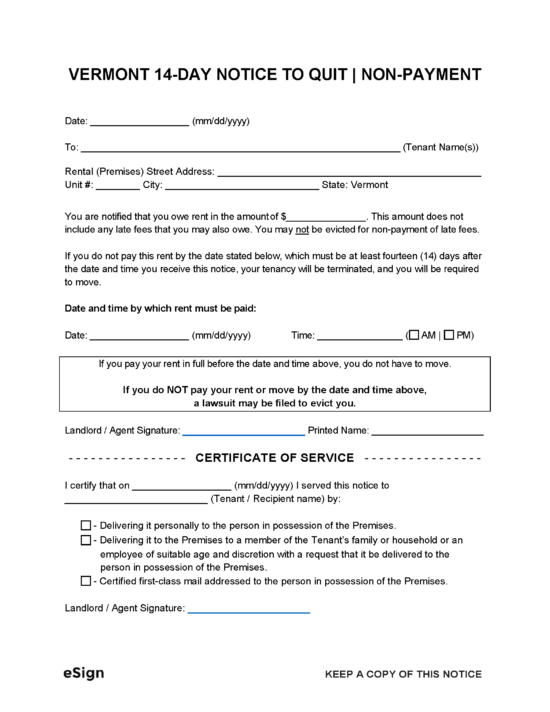 14-Day Notice to Quit | Non-Payment – Informs a tenant that they must settle overdue rent to prevent their lease from terminating. 14-Day Notice to Quit | Non-Payment – Informs a tenant that they must settle overdue rent to prevent their lease from terminating.
Download: PDF, Word (.docx), OpenDocument |
 14-Day Notice to Quit | Illegal Activity – Used to give tenants who have committed illegal acts 14 days to vacate the premises. 14-Day Notice to Quit | Illegal Activity – Used to give tenants who have committed illegal acts 14 days to vacate the premises.
Download: PDF, Word (.docx), OpenDocument |
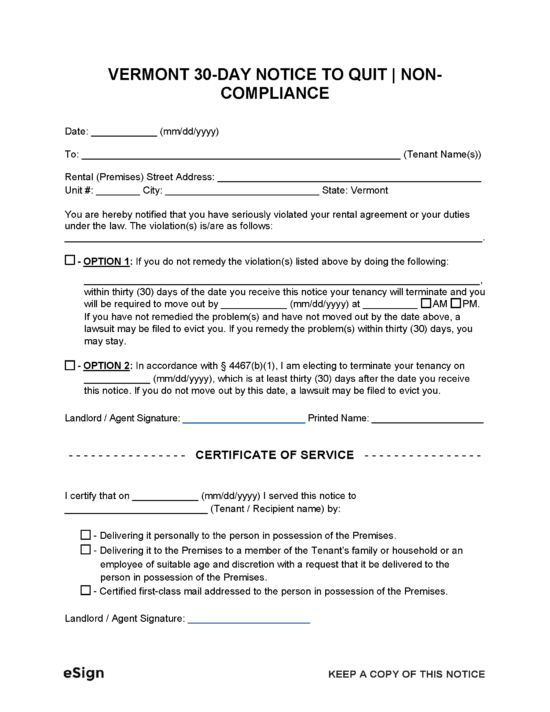 30-Day Notice to Quit | Non-Compliance – A formal notice requiring a tenant to either remedy a lease violation or leave the property. 30-Day Notice to Quit | Non-Compliance – A formal notice requiring a tenant to either remedy a lease violation or leave the property.
Download: PDF, Word (.docx), OpenDocument |
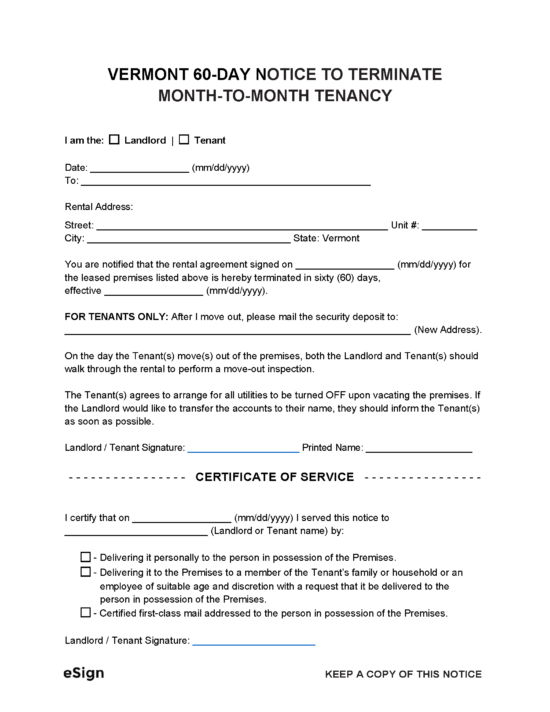 60-Day Notice to Terminate | Month-to-Month Lease – Must be served by a landlord before terminating a periodic, at-will tenancy of two years or less. 60-Day Notice to Terminate | Month-to-Month Lease – Must be served by a landlord before terminating a periodic, at-will tenancy of two years or less.
Download: PDF, Word (.docx), OpenDocument |
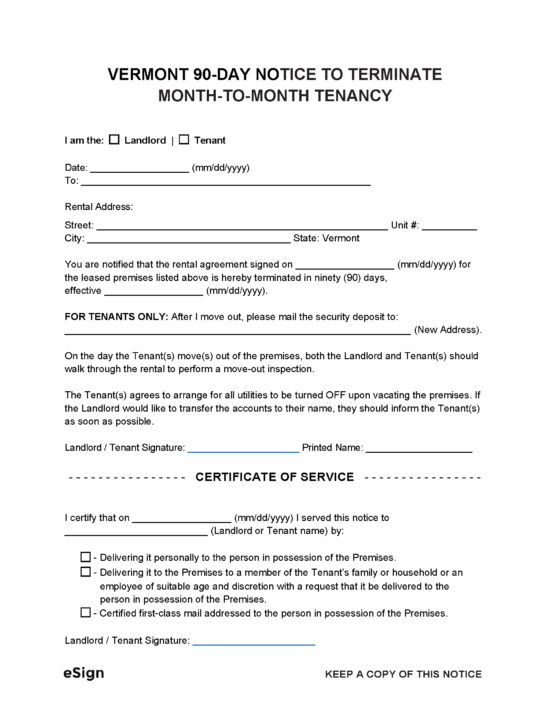 90-Day Notice to Terminate | Month-to-Month Lease – Alerts an at-will, month-to-month tenant that their tenancy will end in 90 days. 90-Day Notice to Terminate | Month-to-Month Lease – Alerts an at-will, month-to-month tenant that their tenancy will end in 90 days.
Download: PDF, Word (.docx), OpenDocument |
Notice Requirements
How to Evict a Tenant in Vermont
Step 1 – Notice to Quit
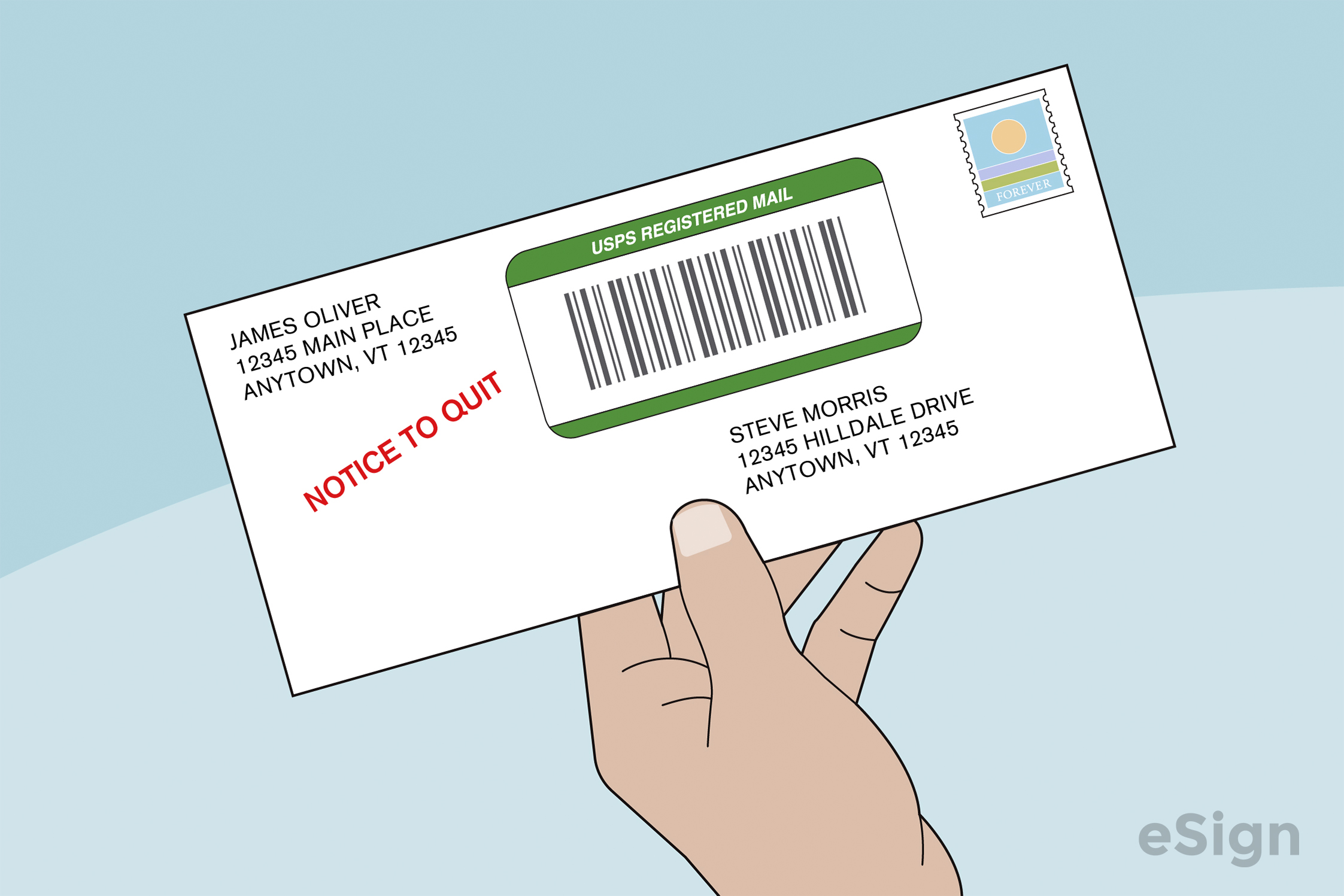
Before beginning the eviction process, the landlord must serve a notice to quit. The notice period will depend on the cause for lease termination.
Step 2 – Draft Eviction Complaint
If the tenant stays past the expiration of the notice period, the landlord must prepare a packet that includes an Eviction Complaint, a copy of the lease and eviction notice, and a Declaration of Compliance.
Step 3 – Filing Complaint and Requesting Summons
The court documents must be filed with the Civil Division of the Superior Court in the county where the property is located (filing fees apply). Upon filing, the court will issue the landlord a Summons.
Step 4 – Motion to Pay Rent in Court (optional)
If the eviction is due to rent nonpayment, the landlord can file a Motion for Rent Escrow with the court requesting that the tenant pay rent to a court escrow. The court will then set a rent escrow hearing separate from the eviction trial.
Step 5 – Serve Complaint and Summons
The landlord must provide a blank Answer form and Notice of Appearance to the sheriff for service. The sheriff will serve the tenant with these two forms and the Summons and Complaint. Once served, the sheriff will then complete a Return of Service for the landlord to file with the court.
Step 6 – Tenant Answer
After being served the Summons, the tenant must respond within 21 days with an Answer (or Counterclaims if they wish to pursue legal action against the landlord) to avoid a default judgment.
Step 7 – Landlord Answer to Counterclaims (optional)
The landlord must file an Answer to any Counterclaims and serve it on the tenant. A Certificate of Service must then be completed and filed with the court.
Step 8 – Rent Escrow Hearing (optional)
If applicable, the rent escrow hearing will occur before the eviction trial. If the judge rules in favor of rent escrow, and the tenant at any point fails to pay the court rent, the landlord may petition the court for a Writ of Possession to obtain immediate possession of the premises.
Step 9 – Trial and Judgment

At the eviction trial, the judge will hear both cases. If the landlord wins the case in the eviction trial, the judge will issue a Writ of Possession, which the landlord must have a sheriff serve on the tenant. The tenant must vacate the property within 14 days after receiving the Writ of Possession or they’ll be physically removed by the sheriff.
Court Forms + Resources
Forms
- Answer
- Signed by: Landlord or Tenant
- Certificate of Service
- Signed by: Landlord or Tenant
- Counterclaims
- Signed by: Tenant
- Declaration of Compliance
- Signed by: Landlord
- Eviction Complaint
- Signed by: Landlord
- Motion for Rent Escrow
- Signed by: Landlord
- Self-Represented Notice of Appearance
- Signed by: Landlord or Tenant
- Sheriff’s Return of Service
- Signed by: Sheriff
- Summons
- Signed by: Landlord, Court Clerk, and Sheriff
- Writ of Possession
- Signed by: Judge
Resources
